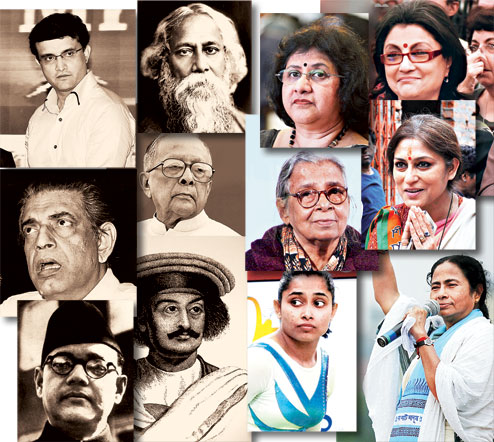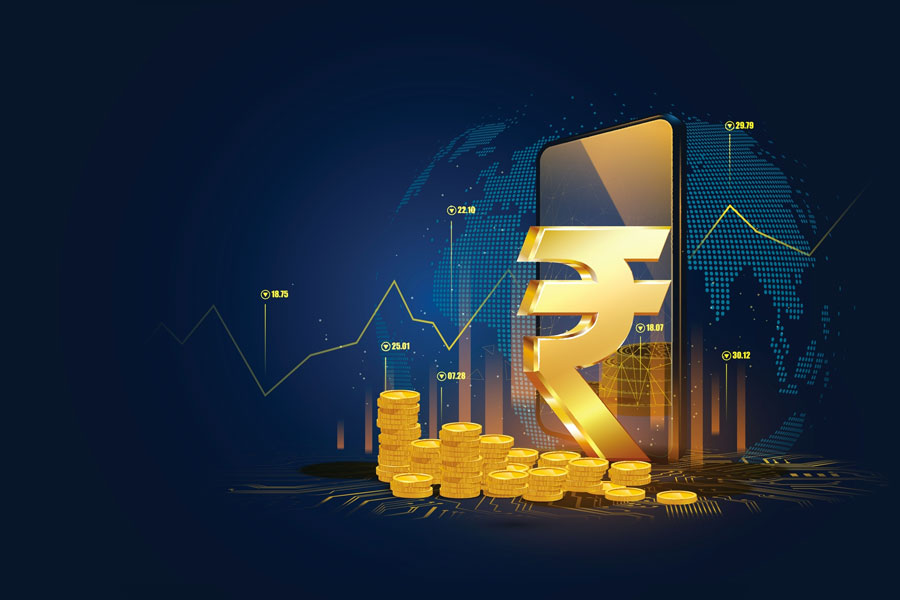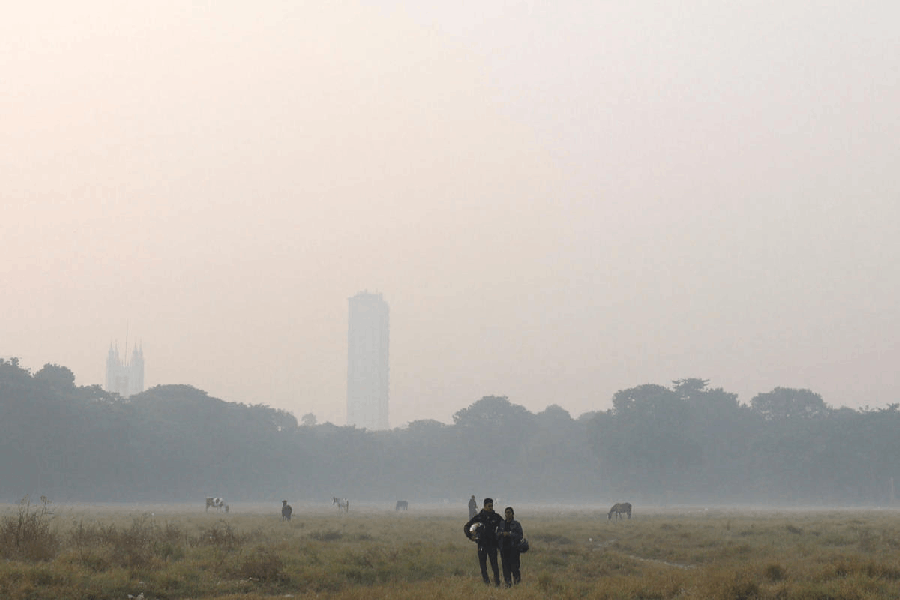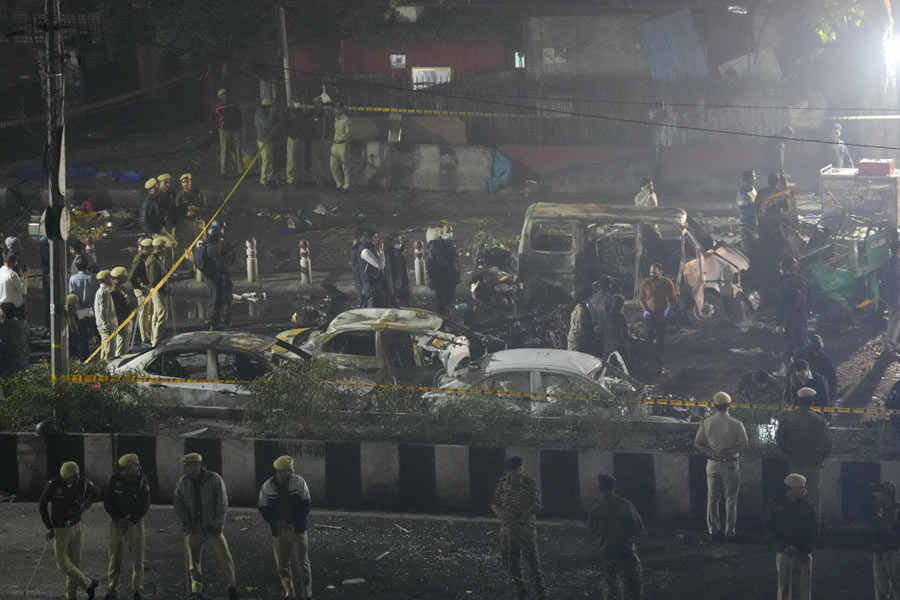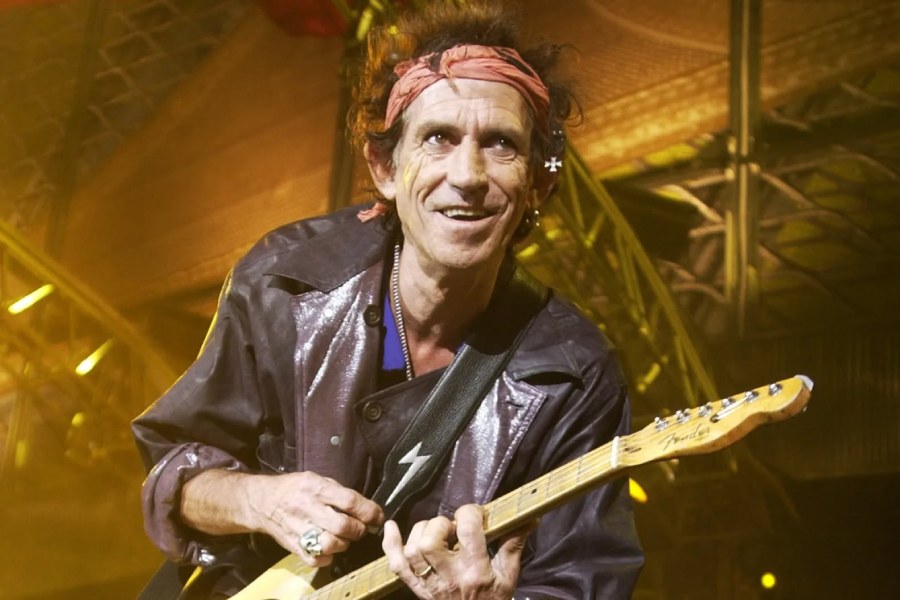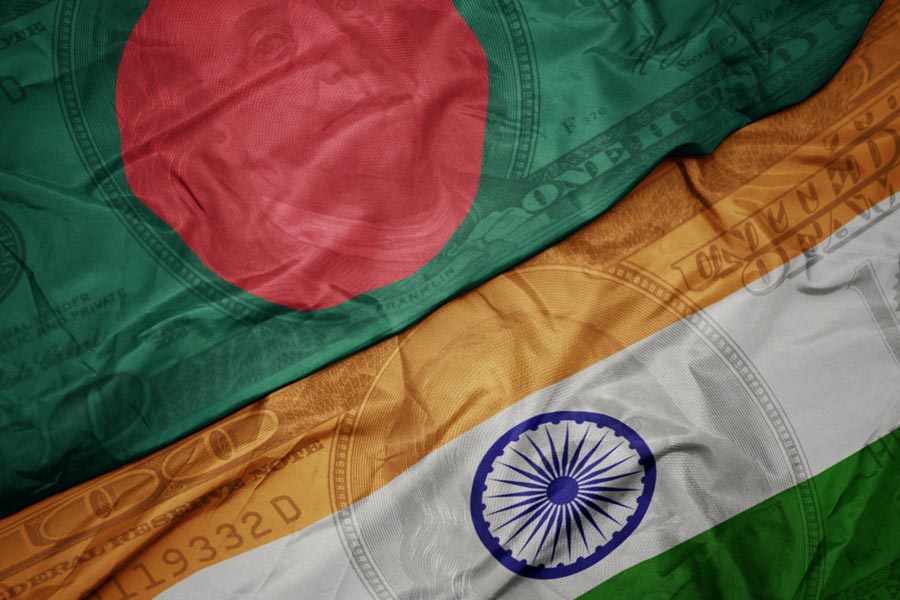
Little Poltu has a test coming up on extinct species. He has mugged up all that he needs to know about the dodo. He looks at the sketch in his textbook of a member of a group that once ruled in his home state, Bengal. It's a male figure, with one hand holding a camera, the other, a pen. This, Poltu reads out aloud, is the Bengali male icon. Rest in peace, says the caption.
Work done, Poltu switches on the television. On the screen is a Bengali woman addressing a rally. He surfs channels - and discovers that the news shows are all about a young woman who has been tossing her body up in the air. The music channels focus on pretty Bengali women singing in their pretty Bengali voices. He picks up his smartphone and clicks a link on YouTube.
The camera zooms in on a woman by a piano. What's your goal? To make maachher jhol, she sings, rolling her eyes and vowels. What's good for your skeen? Boroline, Boroline.
Poltu knows Sawan Dutta. With thick rimmed glasses perched up her nose, she makes light-hearted fun of Bengali must-haves - the cream that heals all cracks and, of course, maachher jhol, good for the taammy, and good for the soul.
She is a Bengali - and she has taken the Internet by storm. And the composer, music producer, singer and songwriter (whose latest offering is on kosha mangsho) is just one among the many Bengali women who are making their presence felt, quite like the men did once.
Folks - and little Poltu - get ready for change. Time was when, if you said the word Bengali, the picture that cropped up was that of the quintessential Bengali bhadralok. Now it conjures up the image of a woman - perhaps in a cotton sari and rubber chappals, or in a halter-neck blouse matched with a black sari, or quite likely in leotards, doing the Produnova.
When Dipa Karmakar flew in the air in Rio last week, she made a point with each breath-taking swirl - that Bengali women are the new symbols of Bengal. And while Karmakar may well be from Tripura, she is - as all of Bengal will affirm, right hand on heart - just as Bengali as S.D. Burman.
"I believe that there is nothing that a Bengali woman or a girl can't do," Karmakar tells The Telegraph from Rio in an interview conducted through her father in Agartala. "We can study, look after our family and at the same time pursue our own dreams. Nothing can stop us - we are surging ahead in all aspects of life."
Karmakar's words point not just to the rise of Bengali women, but to a corresponding disappearance of the Alpha Bong male.
"I have been saying this - just where are the new men," asks Samita Sen, professor, school of women's studies at Jadavpur University, and former vice-chancellor of Diamond Harbour Women's University. "Where are the men?"
They were all there once - much feted in the state and outside. From Ram Mohan Roy and Vidyasagar to Rabindranath Tagore and Bankimchandra, Bengal meant a pantheon of path-breaking men who worked for social reform, won the Nobel, wrote the national anthem and the national song, and did lots more in between. There were giants in the world of art, literature and culture - Baba Allauddin Khan, Ramkinkar Baij and Nandalal Bose, Satyajit Ray, Ritwik Ghatak, Sombhu Mitra, Mrinal Sen and Utpal Dutt, to name just a few. There was also Jyoti Basu in politics - ruling the state of West Bengal for 23 long years.
All that, of course, is history.
"Where are the new men with modern thoughts," Sen asks agitatedly. "If they don't emerge, if they don't change, they are surely going to be surpassed by a bevy of smart women who are asserting their presence in every field."
Indeed, many of the male strongholds have already been taken over by women. If Bengal's politics was once predominantly male, the leaders are almost all women now. Holding the reins of the state - and of her Trinamul Congress - is Mamata Banerjee. The face of the Congress in the state has a large bindi on her forehead. The Bharatiya Janata Party may be led by men but its most prominent figures, apart from a singer-minister, are its two Tollywood actors - Roopa Ganguly and Locket Chatterjee.
And some would link, only half-jokingly, of course, the rut that the Communist Party of India (Marxist) finds itself in with the lack of women leaders in the state party.
"Unfortunately, the Left Front or Communists have failed to bring women political leaders to the forefront," says political scientist Maidul Islam. "This happened because a typical male bonding existed among bhadralok Communist leaders."
If former CMs Basu and Buddhadeb Bhattacharya were the quintessential bhadralok, Banerjee successfully embraced the hurly-burly of street politics - once associated with men - to mark her own advent.
"Women are breaking down gender walls for their place in politics," Roopa Ganguly agrees. "People have become more acceptable of the strides made by women in various spheres," the actor-politician says, though she doesn't believe that men are being elbowed out.
Yet, women are striding ahead. If men once stormed what were seen as women's strongholds - think of the two Sabyasachis, Mukherjee and Gorai, wielders respectively of scissors and spatulas - it is now the turn of women. Today, the field of sports - where, after Chuni Goswami, Sourav Ganguly was the only pan-Bengali hero - has a new icon in the shape of a petite gymnast with a nervous smile.
And who would have thought, even a couple of years ago, that a Bengali woman could have been in the reckoning for the post of the governor of the Reserve Bank of India? But the chairperson and the managing director of the State Bank of India, Arundhati Bhattacharya was right there among the frontrunners.
In science and technology, if the stalwarts were once men - think Bose, Bose and Bose - many of the leading scientists today are women. In music, some of the top female singers in Bollywood are Bengalis: not just the now veteran Shreya Ghosal, but also Monali Thakur and newbie Anwesha Dutta Gupta. "The industry is more open and experimental about voices now. More and more Bengali female voices are being heard," Dutta Gupta says.
And, of course, women rule the word of Bengali literature. Mahasweta Devi was arguably the best known Bengali litterateur of modern times outside of Bengal, better known than her contemporary, Sunil Ganguly, perhaps because her books were made into Hindi films. And who among the present-day male humorists in Bengal can hold a candle to Nabaneeta Dev Sen?
"Women are taking over in literature," concurs sociologist Dipankar Gupta. "It shows three things. First, they are naturally gifted in matters of speaking and writing. Second, they take their education very seriously - boys want to make money. Third, because they have more leisure time they can express themselves more freely. All these make women natural writers."
Education, clearly, has done its bit. And it's also infused confidence among young women, points out Malabika Sarkar, former vice-chancellor of Presidency University. Their mothers struggled to study; but the young no longer need to fight for their place under the sun, she says.
Sawan Dutta would agree. "My grandmother had a PhD in social anthropology, played the piano, and was one of the most highly educated women I've come across in her generation. My mum is a much published author, translator and children's writer. My sister is a leading radio jockey at UK's no. 1 Asian radio station," she says. "More than anything else, to my sis and me, I think, being a Bengali was synonymous with prioritising education."
The rise of successful women, Sen suggests, can also be linked to deferred marriages. A generation or two ago, women often had to drop out of college to get married. "But with time they started to go for higher studies and started marrying late, after completing studies or joining a job," she says.
Another turning point, she adds, was the control they started exercising over their bodies. "Advancement in science and technology has given women the power to control reproduction. Now we don't see women giving birth to several children. This has given women the scope to concentrate on their own ambitions," she says.
Recently, when sociologist Bula Bhadra was in Vienna to take part in an international sociology conference, she discovered that all the six participants from Bengal were women.
"Men are facing stiff competition these days. They have to learn that women will not give away anything to them gift-wrapped. Men will have to compete - in Bengal and globally," she says.
Of course, as the wise man said, a swallow does not a summer make. Poet Joy Goswami is convinced that the real symbol of the Bengali woman is the faceless one that works tirelessly. He recalls his mother, a widowed schoolteacher, who raised him and his brother. He remembers Gorar Maa, who worked in several houses to raise Gora, who went on to join the railways.
"I see many such women in the dingy lanes of cities, towns and suburbs," he says. "They are not famous, but they are the real face of Bengal."
For Poltu, though, the issue is not the rise of the Bengali woman, or her real face. Just what, he wonders, happened to the male icons?
With reporting from Prasun Chaudhuri, Sharmistha Ghosal, Moumita Chaudhuri and Avijit Chatterjee in Calcutta

